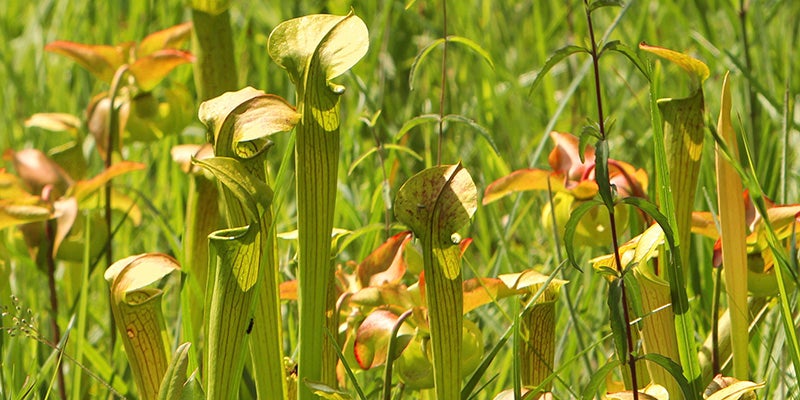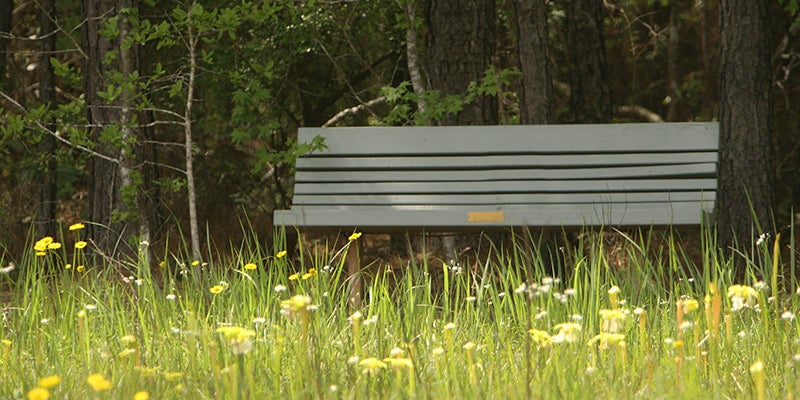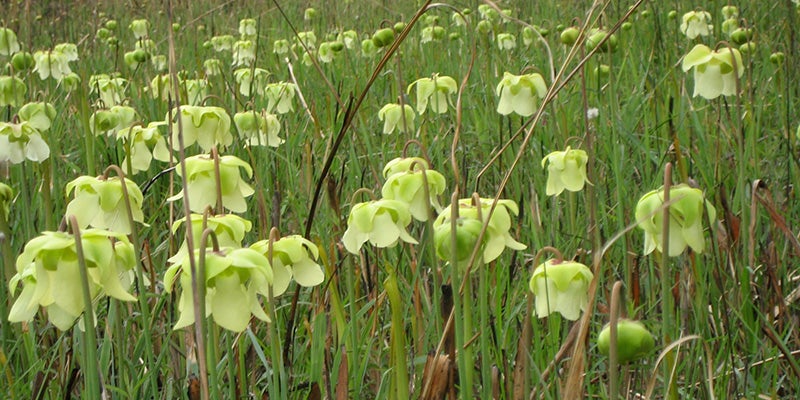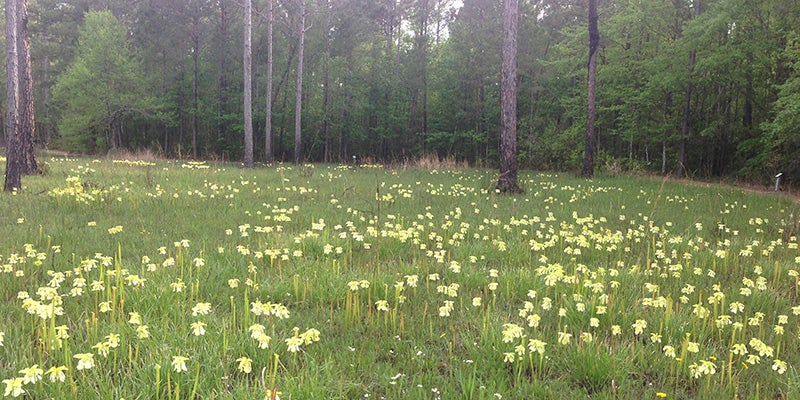Arboretum’s pitcher plants continue to spread in south bog
Published 7:00 am Wednesday, May 6, 2020
By Patricia R. Drackett
Director, The Crosby Arboretum, Mississippi State University
Assistant Extension Professor of Landscape Architecture
Grounds manager Terry Johnson and I took a spin around the Arboretum’s south pitcher plant bog last week, and we were delighted to see that colonies of yellow pitcher plants (Sarracenia alata) are appearing in areas where we have never seen them before. Last week, we mentioned that pitcher plants are a carnivorous plant with hollow leaves containing digestive enzymes that will slowly dissolve insects that tumble into the structures, attracted by sweet-smelling nectar produced by the plant.
On our journey, we speculated about the movement of various plants in the bog, perhaps a result of seed that is carried on the water that will occasionally flood the bog. This sheet flow begins at the north end of our property and flows across the site and into our south bog and beyond. A rich diversity of plant species is found along the southern edge of our bog, such as native orchids.
Many of the pitcher plants in our bog were collected by Arboretum volunteers from the land where Walmart sits today. Others have been collected in more recent years, such as the small maroon blooming parrot pitcher plants (Sarracenia psittacina). Unlike yellow pitcher plants, which attract flying insects, parrot pitchers have tiny openings which lure small terrestrial insects, such as ants.
Soon, we will be welcoming the blossoms of pink meadow beauty (Rhexia spp.) that will be joining the pitcher plants. At least three species of Rhexia occur in the Arboretum’s pine savannas. Also, judging from a yellow meadow beauty (Rhexia lutea) that Terry pointed out, these will also be unfurling over the next month or so, mixing with the pink species.
We were excited to see spots of bright color here and there among the sea of pitcher plants. Some were native orchids, most often the brightly-colored grass pink orchids. It also appears to be a good year for one of our most striking milkweeds in the south pitcher plant bog.Fewflower milkweed (Asclepias lanceolata) is also known as red milkweed. Its flowers are held high on thin stems, and look like bright orange-red dots floating atop the surrounding grasses and perennials. This plant has also been increasing in numbers in recent years.
There is another milkweed called longleaf milkweed (Asclepias longifolia) that is still flowering in the bog. Its bloom clusters are composed of many small purple blooms that look like badminton shuttlecocks. Skippers and other butterflies can often be seen sipping nectar from these wide flower clusters, as milkweed is not just a host plant but an abundant nectar source for many insect species.
Interestingly, neither of these two milkweed species are useful to monarch butterflies, which must consume a large amount of leaves during their time as a caterpillar. To be useful, a milkweed species must grow in large enough quantities that it offers an abundant food supply for developing caterpillars. If you were a monarch caterpillar, and you ate the very last bite of a milkweed plant and dropped off to begin wandering around looking for more, ideally you would discover another plant located nearby. As the fewflower and longleaf milkweed have small leaves, but most importantly grow as individuals quite far apart from each other, they are not a significant milkweed species for monarch butterflies.
We’ve already been seeing lots of dragonflies this year. Did you know over 400 species of dragonflies occur in the U.S.? Many of these seem to have made the Arboretum their home. And these insects are not nectar-sippers. Like pitcher plants, they enjoy a tasty meal made of insects! Dragonflies are voracious predators, capturing insects in mid-flight, for their well-earned nickname, “mosquito hawks”.
Want to attract dragonflies to your garden to remove a few mosquitoes? Provide a source of water. If you have a water or bog garden, you are certain to find them darting among your plants this time of the year, looking for a meal. For more information on attracting butterflies, dragonflies, and other beneficial insects to your garden, search by keyword at the MSU Extension Service website at http://extension.msstate.edu/. To explore a variety of topics on native and ornamental plants, horticulture, home landscape design, plants and maintenance, and gardening, visit the MSU Extension Smart Landscapes website at http://extension.msstate.edu/smartlandscapes or the Smart Landscapes Facebook page.
The Crosby Arboretum is located at 370 Ridge Road in Picayune, at I-59 Exit 4. To receive updates on activities, including when we will be open to the public again, you may sign up for our email listserv at “Events Updates” on the main menu on our website at http://crosbyarboretum.msstate.edu.







